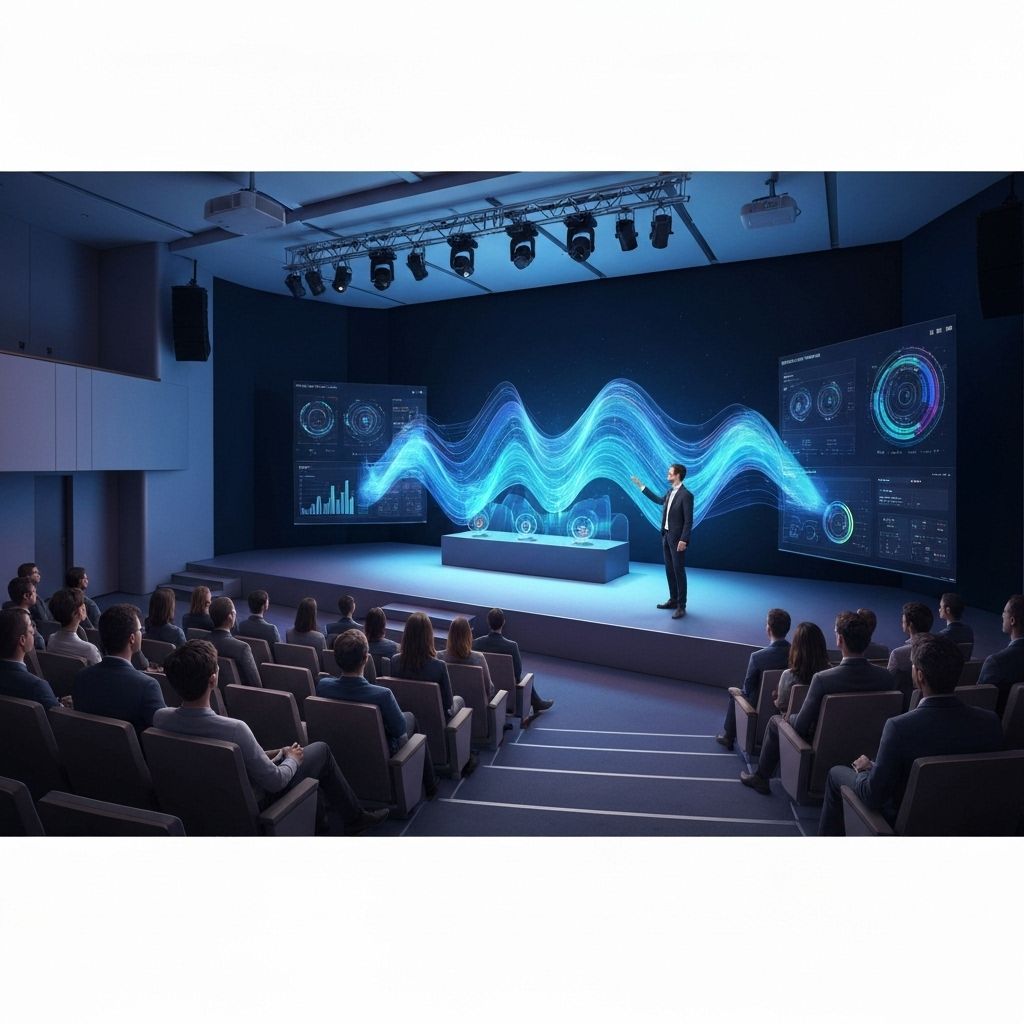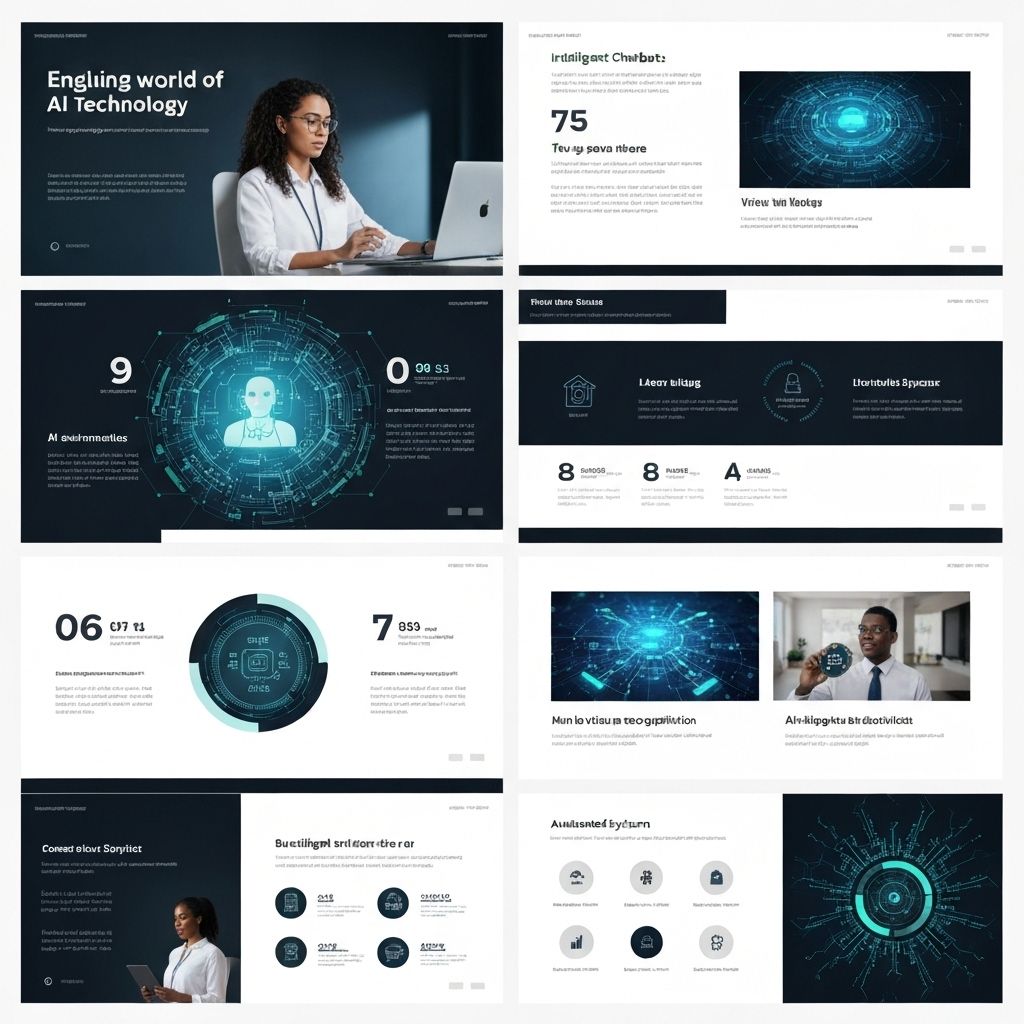The Future of AI in Presentation Technology: What's Coming in 2025 and Beyond

The intersection of artificial intelligence and presentation technology is evolving at breakneck speed, promising to fundamentally transform how we create, consume, and interact with presentation content. As we look toward 2025 and beyond, emerging AI capabilities are set to revolutionize everything from content creation to audience engagement, making presentations more intelligent, interactive, and impactful than ever before.
The Current State of AI in Presentations
Today's AI presentation tools have already made significant strides in automating routine tasks like slide extraction, text recognition, and basic content organization. However, we're still in the early stages of what's possible when advanced AI capabilities are fully integrated into presentation workflows.
Current AI Capabilities (2025):
Content Processing:
- • Automated slide extraction
- • OCR and text recognition
- • Image enhancement and upscaling
- • Basic content categorization
Analysis & Organization:
- • Keyword extraction
- • Topic identification
- • Duplicate detection
- • Simple search functionality
Emerging Trends Shaping the Future
1. Real-Time AI-Powered Content Generation
The next generation of AI presentation tools will generate content in real-time based on speaker input, audience feedback, and contextual data.
Dynamic Slide Creation
AI will generate slides on-the-fly based on speaker notes, automatically creating visualizations, charts, and supporting content.
Adaptive Content Delivery
Presentations will adapt in real-time based on audience engagement, automatically adjusting pace, detail level, and content focus.
Intelligent Content Suggestions
AI will suggest relevant content, statistics, and examples from vast databases to enhance presentation impact.
2. Advanced Natural Language Processing
Future AI systems will understand context, nuance, and intent at unprecedented levels, enabling more sophisticated content analysis and generation.
Semantic Understanding:
- • Context-aware content extraction
- • Relationship mapping between concepts
- • Automatic summarization and synthesis
- • Multi-language content translation
Content Intelligence:
- • Bias detection and correction
- • Fact-checking and verification
- • Tone and sentiment analysis
- • Audience-appropriate language adaptation
3. Immersive and Interactive Experiences
AI will enable presentations to become fully interactive experiences, responding to audience needs and creating personalized learning journeys.
Virtual Reality Integration
AI-powered VR presentations will create immersive environments where audiences can explore content in three-dimensional space, with AI guides providing personalized explanations.
Augmented Reality Overlays
AR technology will overlay AI-generated contextual information onto real-world presentations, providing additional data, translations, or explanations based on viewer needs.
Interactive Q&A Systems
AI assistants will handle audience questions in real-time, providing instant answers or directing queries to relevant presentation sections.
Revolutionary Technologies on the Horizon
Multimodal AI Integration
Future AI systems will seamlessly integrate text, audio, visual, and even biometric data to create comprehensive presentation experiences.
Audio Analysis
Real-time speech analysis for tone, pace, and emotional content
Visual Processing
Advanced image and video analysis for content understanding
Biometric Integration
Audience engagement measurement through physiological responses
Predictive Content Analytics
AI will predict presentation effectiveness, audience engagement, and optimal content delivery strategies before presentations even begin.
- • Engagement Prediction: Forecast which slides will resonate most with specific audiences
- • Optimal Timing: Determine the best pace and duration for different content types
- • Content Optimization: Suggest improvements based on historical performance data
- • Audience Matching: Recommend presentations to audiences based on interests and expertise
Industry-Specific Applications
Education & Training
- • Personalized learning paths based on student comprehension
- • Automatic generation of practice questions and assessments
- • Real-time difficulty adjustment based on student performance
- • Multi-language support for global classrooms
- • Accessibility features for students with disabilities
Corporate & Business
- • Automated competitive analysis integration
- • Real-time market data incorporation
- • Stakeholder-specific content customization
- • ROI and performance metric visualization
- • Compliance and regulatory content verification
Healthcare & Medical
- • Patient-specific case study generation
- • Medical imaging integration and analysis
- • Drug interaction and contraindication alerts
- • Evidence-based medicine content sourcing
- • Continuing education credit tracking
Research & Academia
- • Automatic literature review integration
- • Statistical analysis and visualization
- • Peer review and collaboration features
- • Citation management and verification
- • Cross-disciplinary connection identification
Timeline: What to Expect When
2025-2026: Near-Term Developments
- • Enhanced OCR with 99%+ accuracy across all languages
- • Real-time presentation translation and localization
- • Advanced content summarization and key point extraction
- • Improved integration with popular productivity tools
- • Basic predictive analytics for presentation effectiveness
2027-2028: Medium-Term Innovations
- • Fully interactive AI presentation assistants
- • Advanced biometric audience engagement tracking
- • Seamless VR/AR presentation experiences
- • Automated content generation from minimal input
- • Cross-platform presentation ecosystem integration
2029-2030: Long-Term Vision
- • Fully autonomous presentation creation and delivery
- • Brain-computer interface integration for thought-to-slide creation
- • Holographic and spatial computing presentation environments
- • Universal knowledge integration from global databases
- • Quantum-enhanced processing for complex content analysis
Challenges and Considerations
While the future of AI in presentations is exciting, several challenges must be addressed to realize this potential fully:
Privacy and Data Security
As AI systems become more sophisticated, protecting sensitive presentation content and audience data becomes increasingly critical. Organizations must balance AI capabilities with privacy requirements.
Ethical AI and Bias Prevention
Ensuring AI-generated content is unbiased, accurate, and ethically sound requires ongoing vigilance and sophisticated bias detection systems.
Human-AI Collaboration
Finding the right balance between AI automation and human creativity will be crucial for maintaining authentic, engaging presentations.
Accessibility and Inclusion
Advanced AI presentation tools must be designed to be accessible to users with disabilities and inclusive of diverse cultural and linguistic backgrounds.
Preparing for the AI-Powered Future
Organizations and individuals can take several steps to prepare for the AI-powered presentation future:
Strategic Recommendations:
For Organizations:
- • Invest in AI literacy training for staff
- • Develop data governance policies
- • Pilot AI presentation tools in low-risk environments
- • Build partnerships with AI technology providers
- • Create ethical AI usage guidelines
For Individuals:
- • Learn to work collaboratively with AI tools
- • Develop skills in prompt engineering and AI interaction
- • Stay informed about AI presentation developments
- • Practice with current AI-powered tools
- • Focus on uniquely human skills like creativity and empathy
The Competitive Landscape
The AI presentation technology market is rapidly evolving, with established players and startups competing to define the future:
Market Dynamics:
Established Tech Giants:
Microsoft, Google, and Adobe are integrating AI capabilities into their existing presentation platforms, leveraging their vast user bases and cloud infrastructure.
Specialized AI Startups:
Innovative startups are developing niche AI presentation solutions, often with more advanced capabilities in specific areas like content generation or audience analysis.
Open Source Initiatives:
Open source AI presentation tools are democratizing access to advanced capabilities, fostering innovation and customization opportunities.
Conclusion: Embracing the AI-Powered Future
The future of AI in presentation technology promises to transform how we create, deliver, and consume presentation content. From real-time content generation to immersive interactive experiences, AI will make presentations more engaging, effective, and accessible than ever before.
Success in this AI-powered future will require embracing new technologies while maintaining focus on human creativity, ethical considerations, and meaningful communication. Organizations and individuals who start preparing now will be best positioned to leverage these revolutionary capabilities as they become available.

